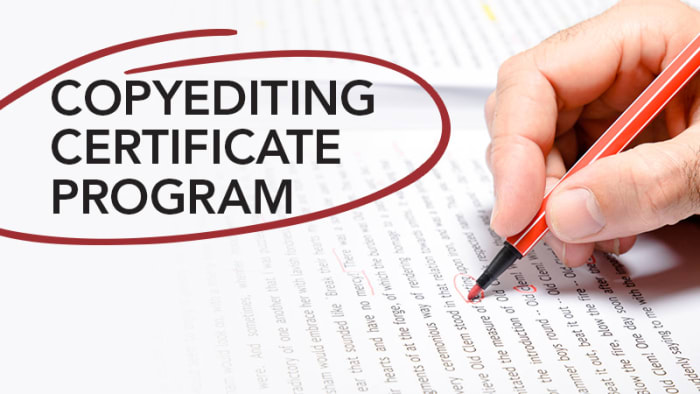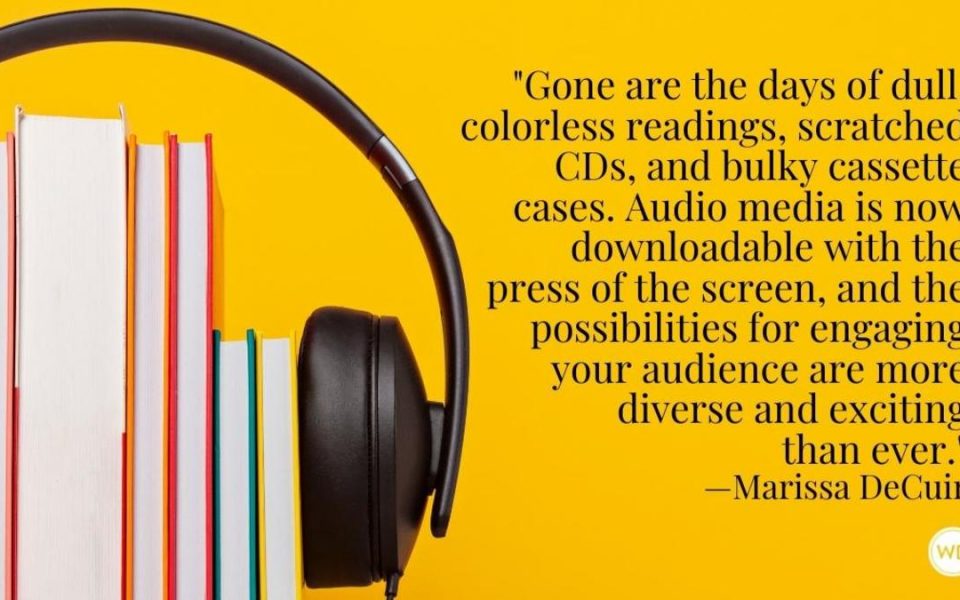5 Creative Ways to Turn Your Book Into Audible Media
Audiobooks are one of the fastest growing formats in publishing. In 2020, publishers experienced a 12% increase in audiobook revenue according to the Audio Publishers Association (the ninth consecutive year of double-digit growth, despite a global pandemic). Audiobooks are predicted to become a $19 billion dollar industry by 2027.
Why are audiobooks so popular? First, they don’t “compete” for a reader’s time the way a print book or screen does. Most people tune-in to audiobooks while multitasking (such as cleaning or driving), meaning they can make the most of their already limited time.
Second, audio storytelling is more creative and accessible than ever. Gone are the days of dull, colorless readings, scratched CDs, and bulky cassette cases. Audio media is now downloadable with the press of the screen, and the possibilities for engaging your audience are more diverse and exciting than ever.
If you own the rights to your book (or have your publisher’s permission), you should definitely explore the fresh ways you can bring it to life. Here are just a few ways you can get creative with your audiobook!
1). No (human) narrator, no problem.
Ultra-realistic text-to-voice technology is evolving—fast. Not only is the technology sounding more natural than ever, but it’s also becoming more accessible than ever. Soon it will be feasible for authors (especially indie authors who may have limited budgets) to easily produce and distribute their own audiobooks, without a studio or recording equipment.
(Why Audiobooks Are Skyrocketing, and How Writers Can Take Advantage in 2022)
For example, recently Ingram has partnered with Deepzen to make AI audiobook narrator technology available to Lightning Source authors. The AI narration uses a realistic text-to-voice technology “capturing all the elements of the human voice,” which could save authors thousands of dollars on hiring a “real” narrator.
While “AI narrators” aren’t universally available, diverse, or advanced yet, the possibilities for the near future are very promising. Imagine if you could upload your text manuscript, select various voices for the different characters (voices that are practically indistinguishable from a “live” reading), add music and sound effects, and produce a gripping audiobook just with the touch of a few buttons. Producing an audiobook is easier than ever, and we can’t wait to see what the future holds!
2). Release your story as a podcast.
The “serialized novel” has made a comeback thanks to podcasting. Some authors are taking the most straightforward route by setting up their podcast and reading their book aloud during each episode (which usually lasts between 15 minutes and an hour). This “bite-sized” audiobook approach is meant to cater to shorter attention spans, and also—if you’re savvy about it—build anticipation for the next “installment.” Ideally, the author will be able to grow an engaged listening audience in real time.
However, it’s important to understand how a podcast differs from an audiobook. If you really want to be smart about engaging your audience, you’ll want to begin each episode with an action that hooks your listener within the first minute. End each episode with a tantalizing scene that keeps them hungry to tune into the next episode. You’re catering to short attention spans, so give your audience a reason to keep listening. Just as a screenplay sometimes needs to reorganize a novel’s story in order to best convey it on film, so too should a book be adapted to fit the podcast medium.
3). Release your story as a radio play.
There are even more interesting and creative ways to convey your story in audio than by simply reading it aloud. Radio theater has been transfixing listeners for decades, and thanks to audiobooks’ booming popularity, it’s making a resurgence. Authors like Neil Gaiman have turned some of their most popular novels (such as Neverwhere and The Sandman) into radio plays with multiple voice actors, sound effects and musical cues that bring the story vividly to life. Radio plays rely on dialogue between characters (rather than an omniscient narrator) to convey the action, and a variety of sound effects to create atmosphere and setting. They are truly a “movie for your mind.”
4). Release your story as an immersive fictional podcast.
Welcome to Night Vale is one of the most well-known fictional podcasts. Rather than reading a story about a town called Night Vale, the creators of this beloved podcast position their content as a “real” radio show coming from the “real” town of Night Vale—a town where nothing is as it seems. As the show states, “WELCOME TO NIGHT VALE is a twice-monthly podcast in the style of community updates for the small desert town of Night Vale, featuring local weather, news, announcements from the Sheriff’s Secret Police, mysterious lights in the night sky, dark hooded figures with unknowable powers, and cultural events.”
Another immersive podcast idea is for a team of (fictional) experts to discover “lost audio tapes” from an interesting (also fictional) figure—a prisoner, an agent involved in a secret organization, etc.—and present these “tapes” to the audience via a podcast. Everyone involved in the podcast would be part of a fictional narrative, but would present the narration as “true.” This Blair Witch Project style of storytelling will have your audience questioning if what they are hearing is “real” or not, creating intrigue and suspense.
An immersive podcast is a creative choice for any author who is interested in world-building beyond the page and bringing their stories (especially if they are fantasy, paranormal, horror, sci-fi, Lovecraftian, dystopian, etc.) to life in a fresh way.
5). Release your story as an interactive podcast.
What if your readers (or listeners, in this case) had an active say in developments and even the conclusion of your narrative? Stories can take on a “choose your own adventure” quality when you are releasing audio content each week. Create your basic podcast story structure (characters, themes, major plot points), and then actively solicit input from your listeners for where the story should go next week. Listeners will be more highly engaged when they hear their story suggestions incorporated into the next episode!

Writer’s Digest is proud to offer our Copyediting Certificate Program. This course will provide training for aspiring copy editors in order to give them practical and marketable workplace skills. As a student in this certification course, you will progress from the fundamentals of grammar, form, and composition to advanced copyediting skills.


